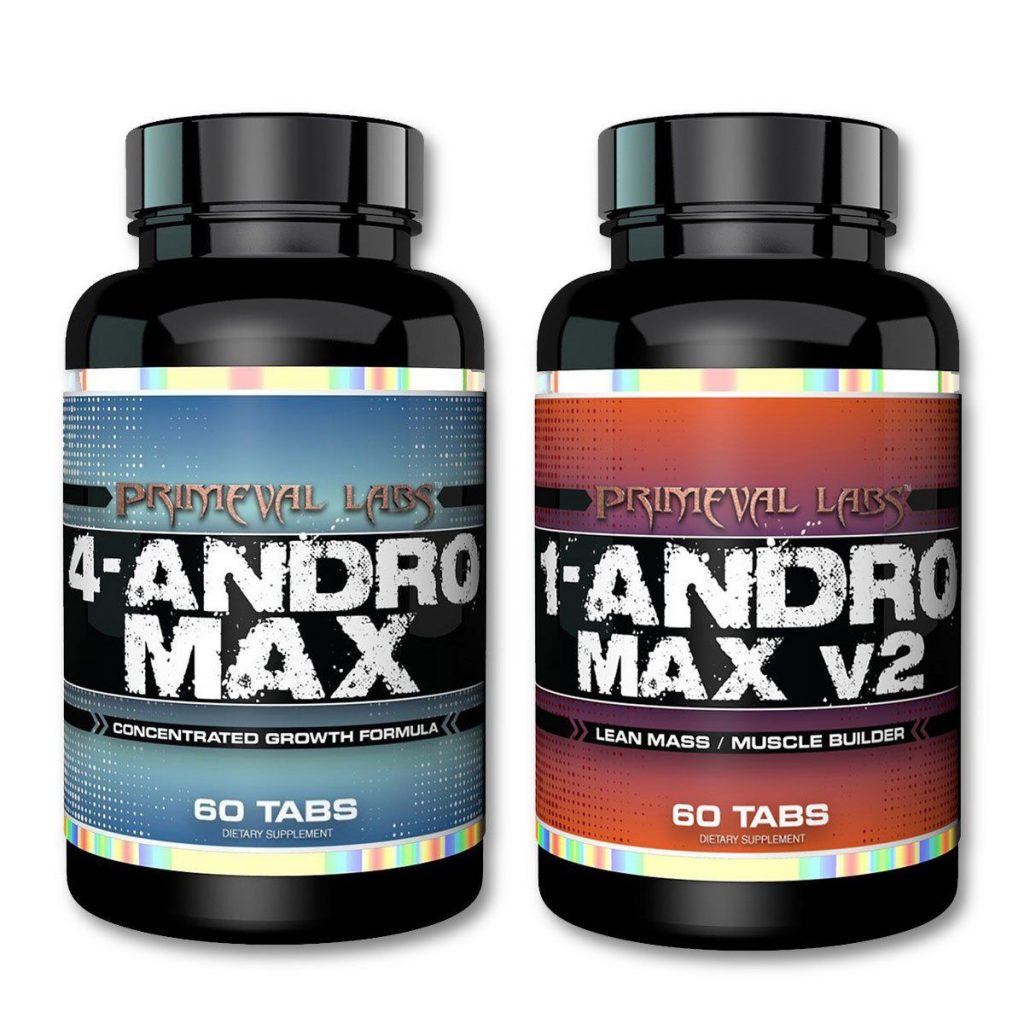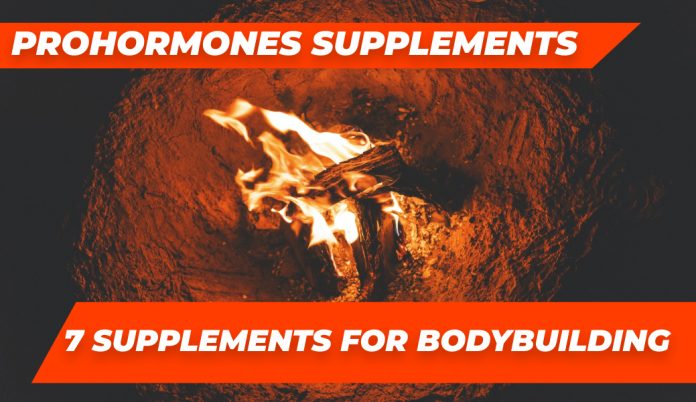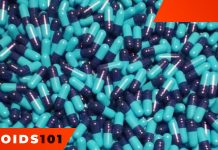A large number of natural prohormones are found in the human body, like proinsulin, the precursor of insulin, or thyroxine, the precursor of triiodothyronine. As the name might imply, prohormones are precursors of hormones, even though they are not biologically active. The term was first used in medicine in the mid-20th century.
In bodybuilding, prohormones are considered prosteroids, which, when ingested, are converted by the enzymatic splitting of a part of the molecule into active anabolic substances testosterone, etc. However, the concepts of prohormones and prosteroids are not the same thing. Prosteroids are just a type of prohormones.
Prohormones In Bodybuilding
In the past two decades, prohormones have been actively used by athletes in bodybuilding, powerlifting, and other strength disciplines to increase muscle mass and strength. Initially, the main advantage of prohormones was their legal status, since formally (and technically) they are not anabolic steroids per se. Nevertheless, in recent years, many prohormones are listed along with steroids, and their circulation is limited.
As for today, manufacturers are continually working to create new prohormone substances that are not yet banned. However, a couple of years after the product is withdrawn from circulation.
As a rule, manufacturers claim that their prohormones are much safer than steroids, but in reality, this is not always entirely true. Firstly, the manufacturer’s primary goal is not to create a more reliable product but to synthesize a new formula that would have anabolic effects and would not be listed as a prohibited substance. At the same time, the issue of safety is secondary. Secondly, most prohormones are much weaker than anabolic steroids, and this explains the lower risk of side effects. It leads us to the conclusion the prohormones are not much safer than steroids taken in moderate doses.
The constant race of manufacturers and government control leads to the fact that some prohormones appearing on the market do not pass any clinical trials. It often turns out that these supplements have rather serious side effects that are even more severe than that of the regular steroids. It should be noted that prohormones have a dietary supplement’s status, which means that the quality control of these products is much lower than that of pharmaceuticals.

Most Popular Prohormones
- 4-androstenedione
- converts to testosterone;
- studies show that the conversion level does not exceed 6%, which means that only a twentieth part of the supplement is converted to testosterone.
- there is a high probability of the development of gynecomastia, edema and other side effects;
- high androgenic activity.
- 4-androstenediol (4-AD)
- converts to testosterone;
- conversion level is 15.76%;
- not converted to estrogen;
- It has less androgenic activity compared to 4-androstenedione because it does not convert to dihydrotestosterone (DHT).
- 19-norandrostenedione
- converts to nandrolone;
- anabolic activity almost equal to that of testosterone;
- not converted to estrogen;
- low androgenic activity.
- 19-norandrostenedione
- converted to nandrolone;
- The conversion level is slightly higher than that of 19-norandrostenedione.
- 1-androstenediol (1-AD)
- converts to 1-Testosterone (dihydroboldenone);
- It has seven times greater anabolic activity and two times more androgenic activity compared to testosterone;
- Almost completely converted to active form when passing through the liver;
- not converted to estrogen.
- 1,4-androstadienedione (1,4 AD)
- converts to boldenone;
- high oral bioavailability;
- 50% less conversion to estrogen (compared to testosterone);
- low androgenic activity.
- 1-Testosterone (1-T)
- similar to testosterone;
- has four times greater bioavailability when taken orally compared to testosterone;
- not converted to estrogens;
- as a matter of fact, it’s not a prohormone.
Side Effects
Prohormones have the same side effects as anabolic steroids. The severity and frequency depend on the specific formula of the additive.
Scientific Review
Testosterone and growth hormone (GH) are the main hormones in terms of muscle growth (anabolism), increased muscle strength, slowed metabolism reactions, and reduced body fat percentage. Testosterone is also responsible for male secondary sexual characteristics (such as hair growth in certain areas of the body, low-pitched voice, etc.). It is widely known that athletes often take large doses of anabolic steroids to improve adaptation to training, increase muscle mass / accelerate recovery during intense training.
In general, studies have shown that taking anabolic steroids and GH does indeed increase muscle mass and strength. However, this practice has some side effects. There are known cases of hormonal dysfunction, impaired liver function, hyperlipidemia (increased levels of lipoproteins in the blood). Besides, taking steroids increases the risk of cardiovascular disease and inappropriate behavior (the so-called «steroid rage»). Some of these effects are irreversible, especially in women. For this reason, most sports organizations have banned the use of anabolic steroids. Their use should be avoided. The only exception is the use of steroids as prescribed by a therapist for the treatment of certain diseases.
Prohormones (androstenedione, 4-androstenediol, 19-nor-4-androstenedione, 19-nor-4-androstenediol, 7-keto-dehydroepiandrosterone (DHEA), dehydroepiandrosterone (DHEA), etc.) are naturally originating precursors of testosterone and other anabolic substances. Due to its natural origin, they have become popular among bodybuilders. Currently, a relatively large number of over-the-counter supplements contain prohormones.
At the moment, there is some evidence confirming the ability of prohormones to increase testosterone in the blood. But there is practically no evidence that prohormone supplements can improve adaptation to training in young men with normal hormonal levels. Most studies report that prohormones do not affect testosterone levels in any way, and some of them can increase estrogen levels and lower levels of high-density lipoproteins (HDL).
Although prohormones can be used to maintain the level of male hormones in older age groups, they appear to be ineffective in terms of use by athletes. Besides, most sports organizations have prohibited the use of prohormones as “steroid-like substances.» Taking prohormones will give a positive test result for anabolic steroids. It is the intentional and unintentional use of prohormones (as part of various supplements) that has recently become the cause of many positive steroid tests among athletes.
The composition of supplements should be carefully examined for the presence of prohormones. It is especially true for athletes whose sport discipline prohibits the intake of these substances. For example, some prohormones are banned from sale in the US since a special law was passed in 2004 regarding the use of anabolic steroids – the Anabolic Steroid Control Act. The one exception is dehydroepiandrosterone (DHEA), which has undergone many clinical trials in older age groups.
Recently, a new way to increase the level of endogenous testosterone has been found – by blocking aromatase activity. Two studies examined the effects of specific aromatase inhibitors. In both experiments, a significant increase in the level of dihydrotestosterone was recorded. The effect of supplements on the lean muscle mass growth in one of the experiments was not conducted at all, and in the other, no changes were recorded.
Conclusion
Prohormones have no pharmacological advantages compared with anabolic steroids. They are usually much weaker than the latter, while side effects occur quite often, due to poor quality control and the almost complete absence of studies. There is a possibility of delayed side effects, possible carcinogenic activity, etc.



